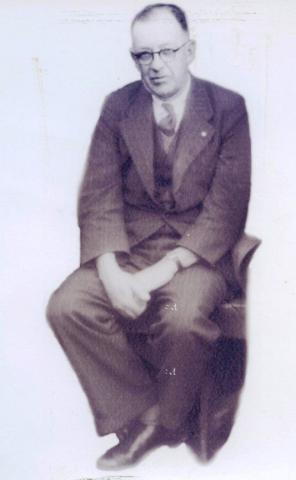THE CASE FOR A DOCTOR IN YALLOURN
Although one of the most important meetings in the history of Yallourn was poorly attended; the consequent resolution adopted, by the workers that night, was of incalculable significance for the people of Yallourn in later years.
The article below, published in August 1923, reports on the attempts of workers at Yallourn to obtain the services of a resident doctor for the town.
It is known that Dr Hugh Mitchell* (from Morwell) had a consulting room at the camp in those early days of settlement. However, injured or sick workers deemed to be ‘serious cases’ were often forced to travel to Morwell for treatment…
“Adequate provisions for present medical requirements for the residents at Yallourn and the works employees are existent. First-aid huts, under the supervision of fully qualified first-aid men, are situated at various points, while for more serious cases the services of a doctor-resident at Morwell, only six miles away-can be obtained at very short notice per medium of the telephone.” ‘Traralgon Record’ August 23rd 1923.
Reading the newspapers files of that era, it appears that Dr Mitchell was a highly respected member of the Morwell community and was an indefatigable figure who worked long hours and had the full confidence of his patients.
*Note: See the further information below regarding Dr Mitchell’s life.
The most telling comment at the meeting that night came from an unidentified worker who suggested that …
“…if a resident doctor could not be secured, perhaps a resident undertaker could be had.”
Little did anyone understand the significance of what was put in place by the resolution that was carried unanimously that night. However, the actions of the men at that meeting at the West Camp Mess, eventuated in the arrival of a young doctor (Dr James Moore Andrew) who would, with the passage of time, assume heroic status in the community.
AUGUST 17TH 1923 ‘MORWELL ADVERTISER’ Page: 4
Yallourn
RESIDENT DOCTOR DESIRED
A public meeting, convened by the Yallourn Welfare Association, was held in No: 1 Mess Room, Western Camp on Wednesday night last, the business being "To urge the commissioners to appoint a Resident Practitioner for Yallourn at the earliest possible moment." –
Judging by the small attendance of the rank and file employed at Yallourn, the matter was a question about which the very large majority did not appear to concern themselves.
The Rev. P. H. Dicker, M. A. presided, Mr P. R. Murphy being Secretary. In opening the meeting the chairman said they were disappointed in two things.
First it was expected that there would have been a very large attendance instead of only twenty or thirty persons.
Secondly they had expected the President of Association to preside, but he had not turned up. There was no doubt that a resident doctor was urgently needed in their midst. There were numerous cases of sickness and the works were of such a nature that serious accidents were apt to occur any hour of the day.
It was therefore imperative to have a doctor on the spot. So much valuable time in cases of sickness or accidents was lost in having to go to Morwell, and on arrival there was at big possibility of the doctor being away. Such a condition of things kept people, especially women, in a state of apprehension and suspense, and jeopardised the lives of all.
The matter of securing a resident doctor had been taken up many months ago when Mr McKinnon was president, and Mr McCarthy Secretary of the Association, but the desired end had not been attained.
When Mr Murphy had subsequently been elected President, he said they should go bald-headed* (see below) to have a resident doctor and a cottage hospital well equipped. A scheme re same had been drawn up but again their efforts were unsuccessful.
In conclusion the chairman said that 1/- per week 'was stopped from all' the men's wages, portion of which was to pay doctor. The amount at present paid guaranteed a doctor £1040 a year or £20 a week. A doctor could also be given the right to private practise. It would not cost the men any more than they were paying.
He recommended that in view of small attendance, a petition be drafted for presentation to the Commission urging them to appoint a resident doctor, and that same be taken around for signature.
Mr Murphy endorsed the remarks of chairman and read correspondence in connection with the matter, including a letter from Sir John Monash, who said he had referred the matter to medical association who had promised to send a sub-committee to investigate and report, on proposal.
Mr Murphy said nothing, however, had so far been done, and as it was a matter of vital necessity they could, not wait indefinitely.
Mr Holland referred to what had been done at Wonthaggi in the matter of securing a resident doctor and recommended that the same be done at Yallourn.
One man present suggested that if a resident doctor could not be secured, perhaps a resident undertaker could be had.
After a good deal further discussion it was unanimously resolved on motion of Messrs Holland and Griffen: "That a petition be drawn up requesting the Commission to appoint a resident doctor at Yallourn, and that signatures to same be secured, if possible, of all persons residing or working at Yallourn."
FOOTNOTES & INFORMATION REGARDING DR HUGH MITCHELL
1. Dr James Moore Andrew (born 1899) was one of 19 applicants for the position of Resident Medical Officer at Yallourn. He arrived in the town in 1926 and made an immediate impact. This website has an excellent summary of the life and times of Dr Andrew, however ….
”No man has done or could possibly have done, more for the community than the doctor who came to Yallourn at the end of 1925…” ‘To Yallourn With Love.’ Page 66.
2. Reverend Percival Heresby Dicker was the first Anglican clergyman of Yallourn.
3. Little is known about P.R. Murphy but he was mentioned in a newspaper advertisement regarding existing vacancies for brick layers in Yallourn in 1922.
4. Mr Holland, who put the motion at the meeting that night , may have been one of pair of brothers who worked with the Board of Works in the early 1920’s
5. Mr McKinnon is thought to have been the foreman of the gang of workers who were responsible for assembling the steam shovel used for excavation in 1921.
6. The term ‘go bald headed’ (as written in the eighth paragraph) is an expression that is rarely heard today. Its origins can be traced back to a time when men wore wigs and it means to… “act impetuously… without restraint… or launch an all-out attack.”
BIOGRAPHICAL NOTES REGARDING DR HUGH MITCHELL
With the arrival of Dr Andrew in 1925, Dr Mitchell ceased his practice at Yallourn. In the history of Yallourn, Dr Mitchell probably deserves greater recognition for his service to the local community in those early days of settlement.
Dr Mitchell was a man of great character, diligence and courage as his service record as an RMO during World War :I indicates. During his service with the Australian Army Medical Corps, he won the Military Cross for bravery in 1916.
The following pen picture of Dr Hugh William Fancourt Mitchell (born in 1888) was found on the website of the Royal Australasian College of Physicians…
“…Hugh Mitchell was the son of Henry St John Mitchell, medical practitioner of Toorak Village, and his wife Lena (nee Nankivell). Both families were well known in Victoria. He was educated at Scotch College and University of Melbourne. After graduating in medicine in 1911 he spent a few months at the Victorian Eye and Ear Hospital, then two years at Perth General Hospital as junior and senior RMO, and some time at Perth Children’s Hospital before beginning general practice at Brookton, Western Australia in 1914.
Joining the AIF in August 1915, he served as a regimental medical officer at Gallipoli and in Egypt and France, being awarded the MC for bravery in 1916. Later he was posted to 2 AGH* where he became an anaesthetist in a forward surgical team with Victor Hurley. In 1917 in England he married Florence Agnes Manning, an Australian army nurse, and the same year was promoted to major.
On his discharge from the AIF he moved in 1919 to Morwell in Victoria where he practised until his retirement to Bairnsdale in 1948. He built up a large practice and had an excellent reputation among both patients and fellow doctors who held him in great respect for his professional skills, his humanity and his modesty and frequently called on his services as a consultant. He was admitted as a Member of the College in April 1940.
….had many interests outside his profession, including Legacy, the RSL, the Gippsland Angling Club and the Victorian Piscatorial Council. He was a champion shot, a keen golfer and later on just as keen a bowler. His wife died in 1949. They had two sons, one of whom (Donald Fancourt Mitchell) is a medical practitioner, and two daughters. ‘www.rcap.edu.au’
Dr Mitchell left Morwell and settled in Bairnsdale in 1948. He died in 1957.
It is recorded in ‘The Argus’ that the funeral service for Dr Mitchell was held at St John’s Church, Bairnsdale on Wednesday 9th January 1957; and the burial was held at the Springvale Crematorium. It is significant that in the funeral notice it was stated that… “the Cortege will pass through Morwell at approx. 11.45am.”
*AGH =Australian General Hospital.
For further Information on Dr Mitchell’s war service record…www.awm.gov.au
_______________________________________________________________
The two doctors, mentioned above, were most significant people in the early history of Yallourn; and readers are warmly encouraged to forward further anecdotes and articles regarding Dr James Moore Andrew and Dr Mitchell to Julie for posting on the Virtual Yallourn website.
Thanks to Bruce McMaster, Morwell Historical Society, for his assistance in obtaining a photograph of Dr Mitchell for posting on this website.
This story was researched, written and presented for the Virtual Yallourn website by Julie George and Roger Spaull in January 2016.
The above article from the ‘Morwell Advertiser’ has been faithfully reproduced. The only amendments to the original copy are the font style, font size and spacing, so as to enhance the article for purposes of posting on the Virtual Yallourn website.
Dr James Moore Andrew
Never far from the action… Dr James Moore Andrew (dark suit and without hat) can be seen nearest to Sir John Monash at the official opening of the Yallourn Hospital on 13 January 1929.


